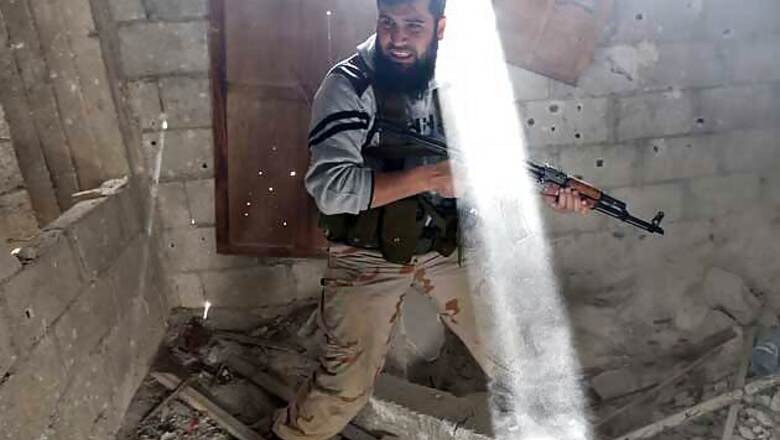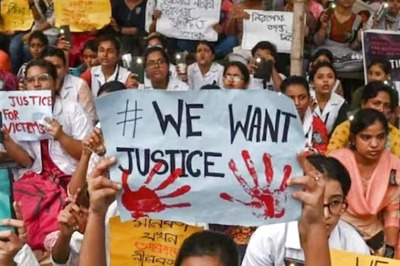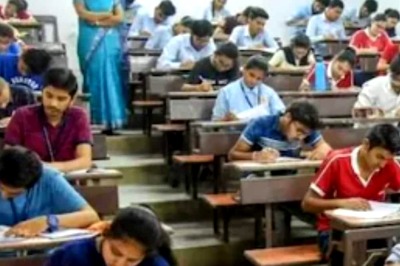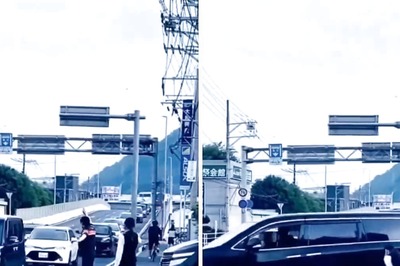
views
Beirut: Capitalising on a recent influx of weapons, Syrian rebels are waging a strategic battle for the southern part of the country and seeking to secure a corridor from the Jordanian border to Damascus in preparation for an eventual assault on the capital.
On Friday, the rebels celebrated their latest victory: They seized full control of Dael, a key town along a main highway, after forces of President Bashar al Assad's regime all but withdrew from the area.
"God is great! We are coming, Bashar!" armed fighters cried overnight Thursday after they captured the last of the military checkpoints in the town where Assad's forces had been holed up, according to amateur video posted online.
Dael is one of the bigger towns in the southern Daraa province, where the uprising against Assad began in March 2011, when security forces arrested high school students who scrawled anti-regime graffiti on a wall.
Activists say it was in Dael that the first statue of Assad's father and predecessor, the late President Hafez Assad, was first toppled shortly after the protests broke out.
The regime responded with a ferocious military crackdown in the area. For a long time, it succeeded in muting the revolt there while government troops turned their attention to defending Syria's northern and eastern regions against rebel advances as the uprising turned into a civil war in which an estimated 70,000 people have been killed.
But in dusty agricultural towns and villages across the province, the rebels have recently gone on the offensive, expanding their presence with a renewed sense of purpose. The rebel fighters include Islamic militants.
The strategic region - known as the Houran plains, which stretch from the outskirts of the capital south into Jordan - is seen as a crucial gateway to the ultimate prize of Damascus.
A recent influx of weapons appears to have made the goal seem more within reach than ever.
Although rebels control wide areas in northern Syria that border Turkey, the Jordanian frontier is only about 100 kilometers (60 miles) from Damascus, or a third of the distance to Turkey in the north, where fighters control large swaths of territory.
Rebels have established footholds in a number of Damascus suburbs but have only been able to push into limited areas in the southern and northeastern parts of the capital. Fighters say they are trying to carve out a route from Jordan to Damascus.
In recent weeks, they have made significant advances in the southern provinces of Daraa and Quneitra bordering Jordan and Israel, seizing towns and villages near the cease-fire line between Syria and Israel in the Golan Heights and along the international highway linking Damascus with Jordan.
They also seized several army checkpoints, clearing a 25-kilometer (15-mile) stretch along the Syrian-Jordanian border. Last week, rebels seized a major air defense base near the village of Saida.
It is difficult to know the size of the area controlled by the rebels. Activists say that in many towns and villages in the province, regime forces maintain "symbolic" presence through small bases and checkpoints that are increasingly coming under attack.
Fighting takes place on daily basis in areas like Tafas, Sheikh Maskin and Izraa along the route.
On Friday, regime forces abandoned the last of several checkpoints in Dael after a 24-hour rebel offensive. Dael has a population of 40,000 people, making it one of the bigger towns in the region, which is dotted with small family farms, and is less than 15 kilometers (10 miles) from the Jordanian border in Daraa province.
An activist in Tafas, who spoke on condition of anonymity because he feared government retaliation, said the presence of the regime forces in the province was shrinking daily.
The Ababil Houran and al-Omari brigades are among the prominent groups taking part in the fighting, along with the Yarmouk Martyrs Brigade, a band of Islamic militants that held 21 Filipino peacekeepers hostage for four days last month, raising concerns about the future of UN operations in the Golan Heights.
Amateur video posted online by activists showed rebels in the streets of Dael and the bodies of dead soldiers on the ground. They also showed women celebrating and fighters shouting, "We are coming, Bashar." The videos appeared genuine and corresponded to other Associated Press reporting on the events depicted.
The series of rebel gains coincided with what regional officials and military experts say is a sharp increase in weapons shipments to opposition fighters by Arab governments, in coordination with the US, in the hopes of readying a push into Damascus.
Officials and Western military experts have told the AP that Jordan has opened up as a new route for the weapons late last year. Two military analysts who closely follow the traffic said the weapons include more powerful, Croatian-made anti-tank guns and rockets, which the rebels have not had before.
Eliot Higgins in Britain and Nic Jenzen-Jones in Australia said they include M60 recoilless guns, M79 Osa rocket launchers, and RBG-6 grenade launchers, which all are powerful anti-tank weapons.
The weapons appear to have come in play recently. In videos posted on the Internet earlier this month, rebels are seen carrying M79 Osa rocket launchers and more advanced weapons than the ones that the rebels were previously known to have.
A Syrian opposition figure who closely follows the fighting on the ground said recent rebel gains were due to the new flow of weapons from Jordan. He said a new supply route from Jordan to Damascus meant the rebels can now advance from different fronts to the capital. He spoke on condition of anonymity because he was not authorized to discuss such matters on the record.
Syrian activist Maher Jamous, who is from Dael but lives in the United Arab Emirates, said that despite the steady advances and the latest rebel victory in Dael, the regime still maintains a strong presence in the strategic province that leads to the capital.
The regime is known to have posted elite troops in Daraa province, which separates Damascus from the Israeli-occupied Golan Heights that the Jewish state captured in 1967 and annexed in 1981.
The province was once considered one of the most loyal regime strongholds. Vice President Farouk al-Sharaa, Deputy Foreign Minister Faysal Mekdad, Information Minister Omran al-Zoubi and several others high ranking officials are from Daraa.
"Our tactical plan is (control of) Daraa and strategically Damascus because the regime will only be defeated and brought down in Damascus," said Col. Ahmad Fahd al-Naameh, commander of the Military Council of the Southern Front.
In comments to Al Arabiya, he denied receiving weapons through Jordan and said most of the weapons were captured after overrunning army posts or were bought with money from rich Syrians.
In other fighting, the Syrian Observatory for Human Rights said heavy clashes took place between regime forces and fighters trying again to storm a strategic military facility, known as the 17th Division base, north of the city of Raqqa that was captured by rebels this month.
The base is considered one of the most important remaining regime strongholds in the northern province that borders Turkey, the Observatory said. It added that warplanes carried out several air raids in the area.
The Observatory said regime forces bombarded the Damascus suburb of Adra, while the government-run Al-Ikhbariya TV said troops in the area killed "many terrorists" - the term the regime uses for rebel fighters. The site is close to one of the main jails in Syria.
The Aleppo Media Center and the Observatory reported fighting, shelling and attacks by helicopter gunships near the international airport of the northern city of Aleppo, Syria's largest city and its commercial center.
At least 15 people were killed and many others wounded when a missile struck in the town of Hreitan, in Aleppo province, according to the Local Coordination Committees activist group. The report could not be independently verified.




















Comments
0 comment